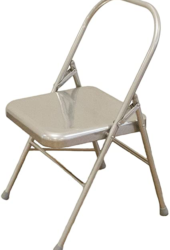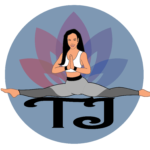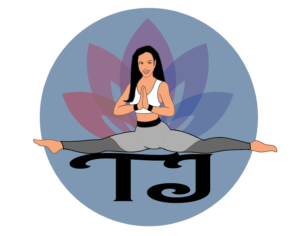Step 3 Props Legend
If the class listing shows one of these, you may need a prop for that class.

Props can be Necessary or Optional.
Necessary = A prop is used in the teaching of certain material.
Optional = You may need a prop to assist you in certain poses. Use your discretion.
What Are Props and Why Do I Need Them?
Yoga Mats

A mat is not needed.
For hundreds of years people practiced without mats. Mats came into popularity once Yoga came to the west and people started going to group classes. Many newer students wanted something to increase traction and also to be a clean barrier between them and the floor. There are many types of mats and people choose their mat based on personal preference and the type of yoga they are practicing. Some styles of yoga don’t use mats, they practice on rugs or on smooth floors with the goal of building more strength. If you are practicing at home there is no reason you need to use a mat unless you want
one. You can practice on your floor, the carpet, on a blanket, or a towel.
Mats come in different thicknesses.
~ In balancing postures a thinner mat is easier because it is more stable. Extra padding creates an unstable surface and makes balancing more difficult. If you are already unstable, then a thinner mat will be easier for you.
~ If you are trying to challenge your balance then choose a thicker mat, pad, or carpet. The extra thickness gives you a less stable base and you have to work harder to balance.
~ If you feel that you need the extra cushioning of an thicker mat, then maybe that is the best choice for you if balancing is not an issue.
~ If you know you have balance issues, but you also need extra cushioning, then consider other props. Maybe use a thin mat and add a pad / blanket underneath your bony parts.
Mats come in different textures.
~ Most people start with some sort of ‘sticky’ mat because slipping is their biggest concern.
~ Once people have built strength then they usually prefer textured mats that work better if they’re sweaty.
~ They can be made with different products such as plastic, rubber, or cork.
Chair

Chair – A sturdy chair can be a valuable prop. You may use one when you are trying to balance in a standing pose. Or it can be used as a support for certain backbends, forward folds, or propping up the legs.
Yoga Blocks

Why use blocks?
It is a common misconception that blocks are only for beginners. Blocks can be of assistance to yoga practitioners of all levels.
Beginners use blocks to support themselves in postures when they don’t have the strength, or to help them reach the floor when they don’t have the flexibility.
Body Structure – Since everyone has a different body structure, legs and torsos that are longer or shorter for example, each person’s posture will look different. Someone that
has longer legs and a shorter upper body won’t be able to touch their hands to the floor as easily as someone whose upper and lower body are more equally balanced. This second person could use a block to make up for the difference in the arm length rather than risking injury by sacrificing alignment.
Experienced practitioners may use blocks to make a pose more challenging. Blocks can make you honest with your alignment, increase the distance in a stretch, or help you build strength by trying to hold the block while doing a pose.
Blocks are made of various materials:
~ Foam is an all round choice. They are the least expensive. They are lightweight and easy to use. Laying on them is relatively comfortable. If you put weight on them in a balancing pose, they are not very stable.
~ Wood blocks are more expensive and are heavier. These are a great option when you are using them for support because they are sturdier, though they are less comfortable when you need to lay on them.
~ Cork blocks are a sustainable substitute for the the other versions. Using them will feel like a blend of the two former choices.
You can use other objects.
~ If you’re using a block for balance then you can find another sturdy object as a replacement. A stool, an upside down pot, a thick book or two, a sturdy box, or another piece of furniture that will allow you to do the posture and get the support you need.
Bolsters or Oversized Pillows

Bolsters or Oversize Pillows – Sometimes you want support that is taller than just a blanket, in this case a firm cushion, pillow, or bolster would work best. They are used in supported poses for example to make sitting more comfortable when your hips are tight.
Yoga Straps

Why use Straps?
Straps are used for many different reasons. The most common is when your arm is too ‘short’. Keeping the bones in a healthy alignment is important, using a strap to lengthen the arm allows you to stretch the muscles without injury. Straps can also be used to support you in poses.
Sometimes you can use other objects.
~ If you are using a strap to help you in a stretch, then anything long and thin will work: a belt, a scarf, or any long piece
of material will do.
~ If you are using the strap for support, make sure that whatever you are using is strong enough.
Blankets

Blankets – Blankets can be used as cushioning or for support. A thick, twin sized blanket it the best choice. You want it to have some weight and density to it, fluffy blankets don’t work as well since they are too soft.
Wrist Wedges
Wrist wedges – Blankets can be used as cushioning or for support. A thick, twin sized blanket it the best choice. You want it to have some weight and density to it, fluffy blankets don’t work as well since they are too soft.

